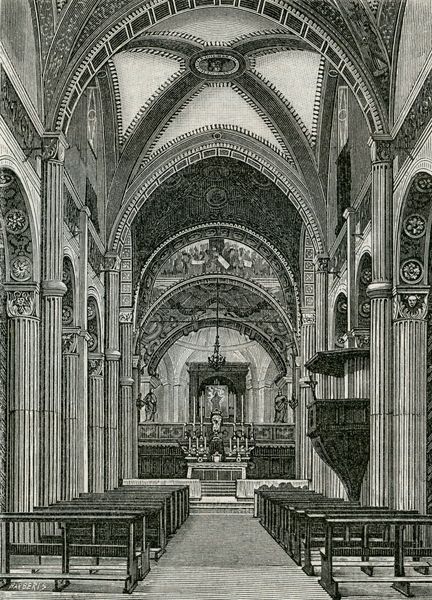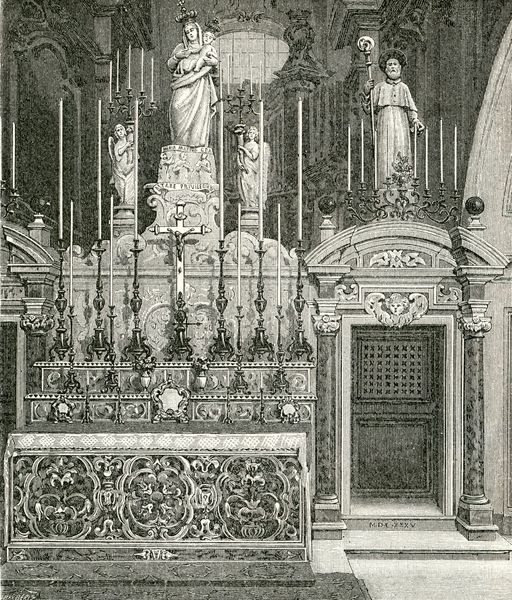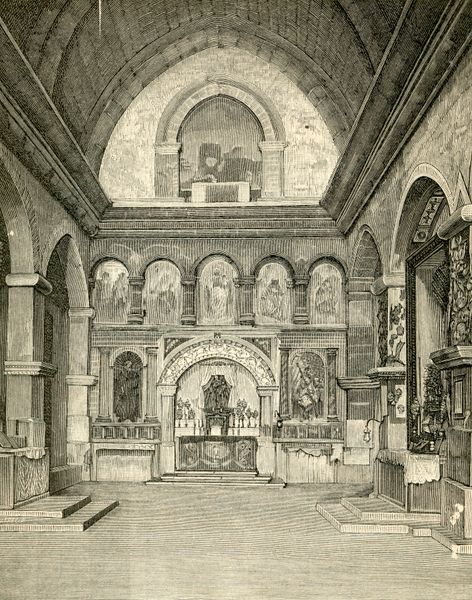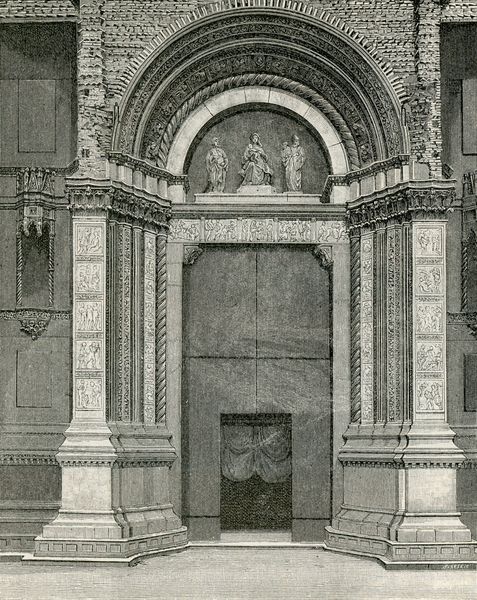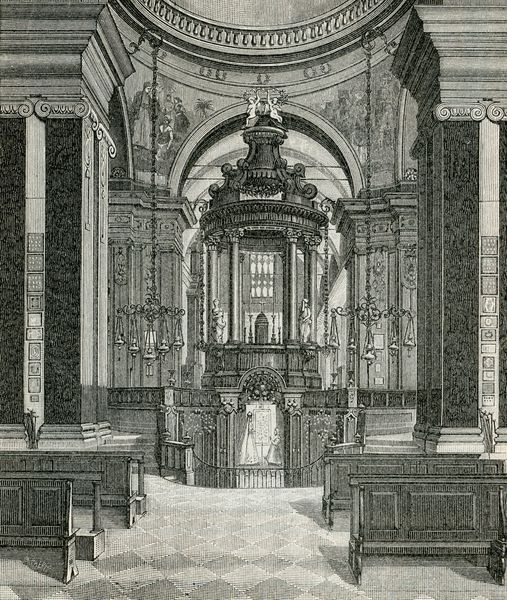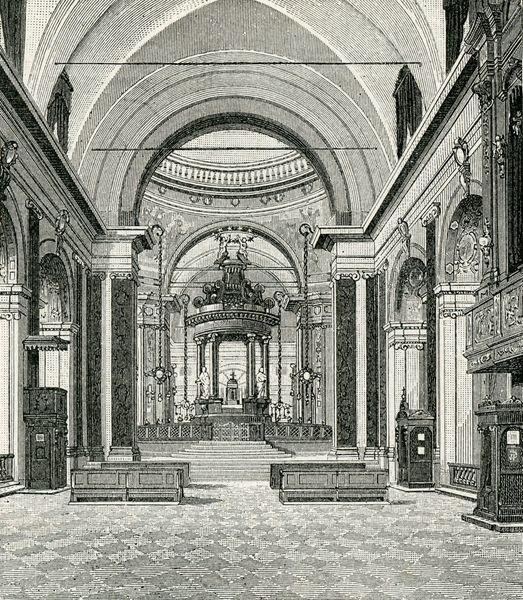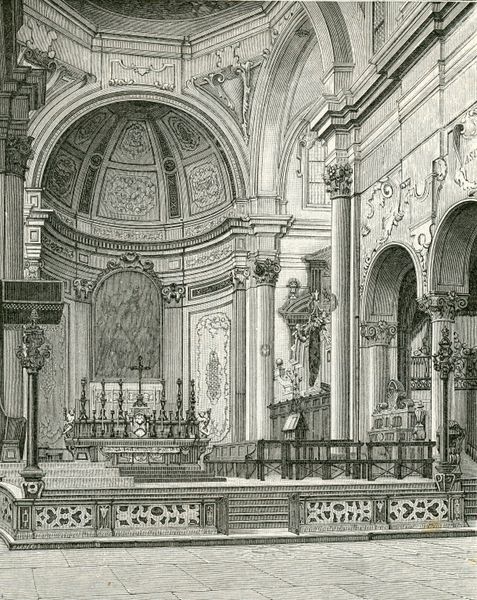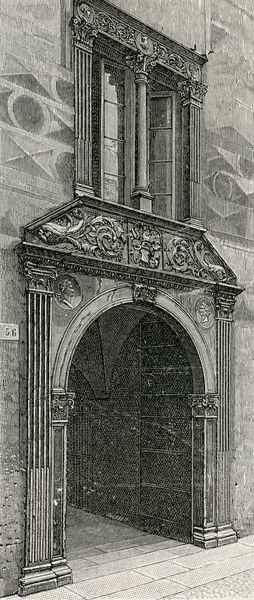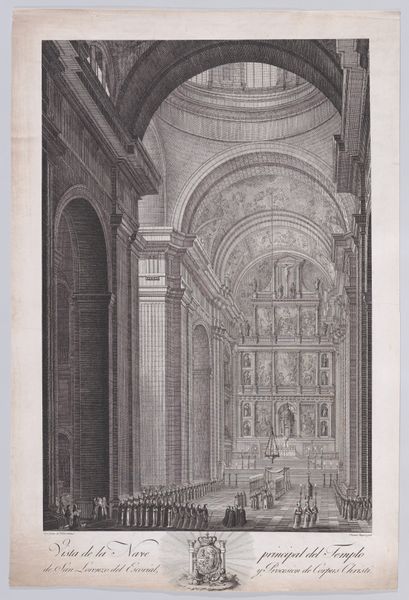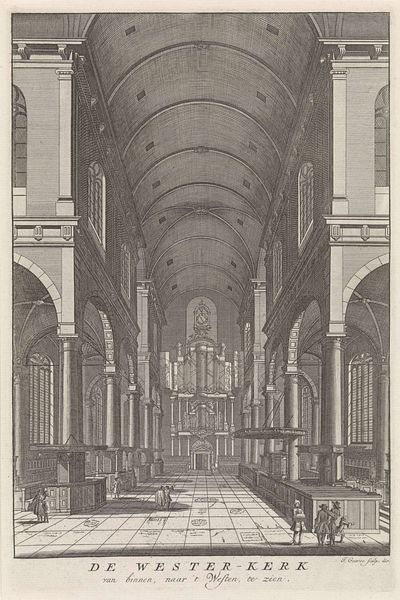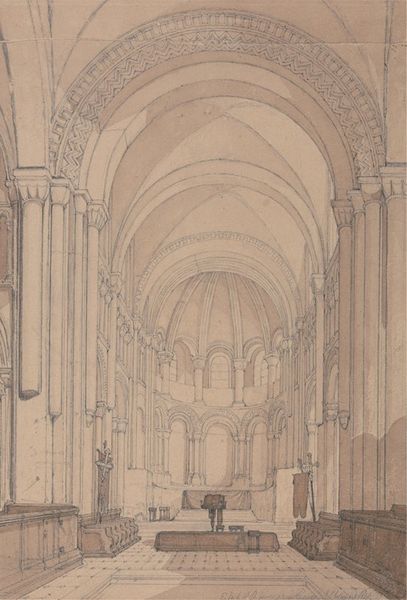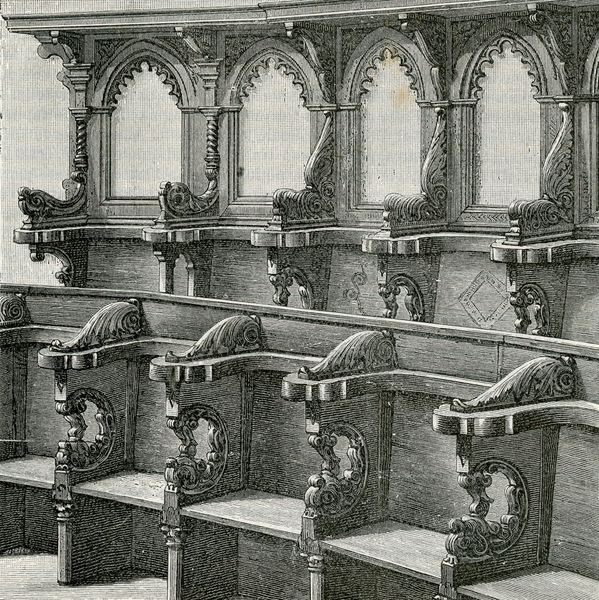
drawing, ink, engraving, architecture
#
architectural sketch
#
drawing
#
sculpture
#
historic architecture
#
form
#
traditional architecture
#
romanesque
#
ink
#
geometric
#
line
#
engraving
#
architecture
#
historical font
#
historical building
#
statue
Copyright: Public domain
Curator: Right, let’s spend a few moments reflecting on Giuseppe Barberis’ 1898 work, "Porta Maggiore Della Chiesa Di Montevergine." What strikes you most about it initially? Editor: Well, there’s this overwhelming sense of depth and receding space. It’s like peering into forever—or at least, very, very far away into a highly detailed cathedral interior. The stark contrast is almost hypnotic. Curator: Indeed. As a formalist, I'm immediately drawn to how the artist uses line and form to create that sense of perspective. The engraving is meticulously detailed, employing hatching and cross-hatching to delineate space and volume. Note the massive columns on either side, leading the eye towards the vanishing point at the altar. The geometry! It's masterful. Editor: It makes me think of faith, strangely enough. How you must trust to ascend the spiritual heights; the altar isn’t casually encountered; there’s such rigid ascending to its mystery and glory. All laid bare in the line. Funny, how formality yields to intuition sometimes, wouldn’t you say? Curator: A delicious tension. What truly grabs my attention, beyond that, is the almost relentless use of geometric shapes. Each element, from the archway to the patterned walls and the individual steps, contribute to a sense of order and stability. Even the shadows are carefully rendered, emphasizing the three-dimensionality. And there is much semiotic consideration of what each form conveys. Editor: Right, I’m catching all that too... like, the light, oh, it’s coming on; yes, there is light… Curator: Barberis compels viewers to appreciate the inherent order of religious space— the line work emphasizes every constructed aspect as integral to something grander than the viewer themselves, while letting you come up close to the interior details in your mind. Editor: The devotion on the part of Barberis is, in a way, palpable, from rendering the form as line art to the subject depicted. But perhaps now, viewers come face to face with their sense of how far away those formal elements can seem. Like history that once was felt can now only be perceived. A little somber perhaps, yes, now I understand... Curator: I’m not so sure, I believe our conversation is evidence that it certainly still moves us to create anew and, therefore, has a great dynamism within itself. Editor: Fair enough. That said, the discussion has definitely left me considering faith from new vantage. Curator: As for myself, reflecting upon the formal structures leaves me ready for more work by Barberis.
Comments
No comments
Be the first to comment and join the conversation on the ultimate creative platform.
